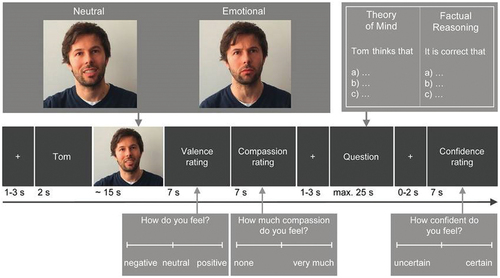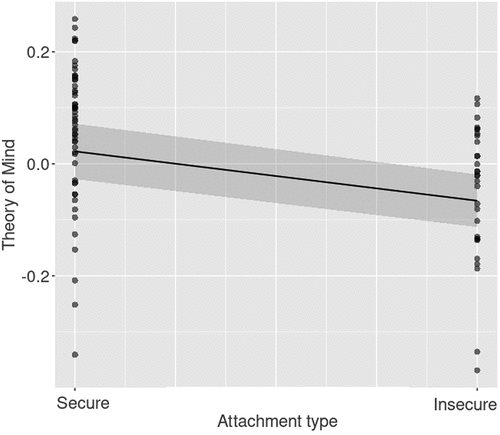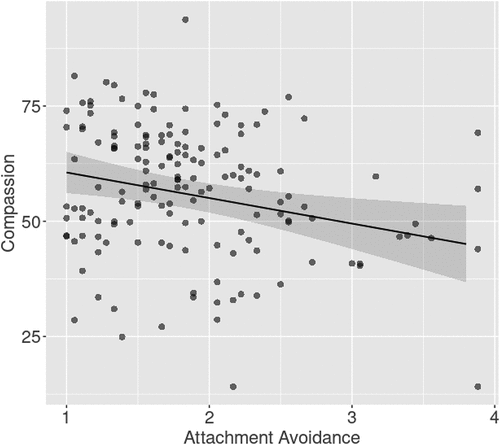Figures & data
Figure 1. EmpaToM Task: exemplary sequence. In each trial, participants view emotionally negative or neutral videos of a male or female actor sharing autobiographical experiences. The videos require either theory of mind (ToM) inference or factual reasoning. Participants then rate their own affect and compassion towards the video’s protagonist. Valence ratings for negative vs. neutral videos measure empathy, indicating how much participants share the protagonist’s negative emotions. Afterwards, participants answer content-based multiple-choice questions requiring ToM inference or factual reasoning, rating their confidence in their answers, assessing ToM abilities. Exemplary images in the figure are illustrative and not based on the original video stimuli due to license restrictions. Figure taken from (Reiter et al., Citation2017).

Table 1. Demographics and descriptive statistics including participant’s AAI attachment.
Figure 2. Association of theory of mind abilities with attachment security. Linear models revealed that secure attachment correlated positively with theory of mind abilities (p=.01). Attachment security was assessed with the adult attachment interview (AAI; George, Kaplan, et al., Citation1985), theory of mind abilities with the EmpaToM, a behavioral computer-based paradigm (Kanske et al., Citation2015).

Table 2. Three linear models predicting categorial (secure vs insecure) AAI attachment.
Table 3. Linear model associating theory of mind abilities with AAI subscales idealization mother and derogation mother.
Figure 3. Association of compassion with subjective attachment avoidance. Linear models revealed that subjective attachment avoidance correlated negatively with compassion (p = .006). Attachment avoidance was assessed with the experience in close relationship questionnaire (ECR-R; Ehrenthal et al., Citation2009; Fraley et al., Citation2000), compassion with the EmpaToM, a behavioral computer-based paradigm (Kanske et al., Citation2015).

Table 4. Three linear models predicting subjective attachment anxiety and avoidance.
